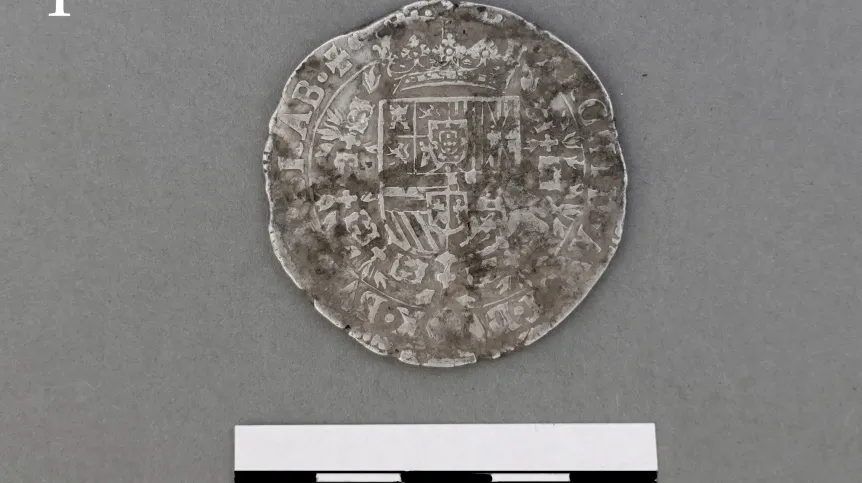
The Świętokrzyska Exploration Group found a treasure of coins from the 17th and 18th centuries in the Świętokrzyskie Mountains. The coins most likely belonged to the hermit Antoni Jaczewicz. According to legend, the 18th-century preacher made a fortune by convincing the local population of his supernatural healing abilities.
According to Sebastian Grabowiec, president of the Świętokrzyska Exploration Group, one of the most interesting finds was a Hamburg gold ducat from 1648, with an image of Madonna and Child, pierced at the edge of the coin, which suggests that it could have been used as a medallion.
Explorations were carried out in the Jeleniów Range, where at the beginning of the 18th century Antoni Jaczewicz, proclaiming himself a healer, and founded his hermitage. The coins were hidden in several locations underground.
Grabowiec noted that Jaczewicz was believed to have arrived in the Świętokrzyskie Mountains region around 1708. At that time, the Republic of Poland was hit by another wave of the plague epidemic, which, with the beginning of the Great Northern War, easily spread across the country. People flocked to his hermitage, lured by the promise of healing.
'The coins we recovered may be part of the legendary treasure collected by Jaczewicz,’ he said.
According to legend, due to the accumulated wealth, the hermitage turned into a forest bandit hideout with guards who robbed pilgrims and nearby properties.
Ultimately, the local nobility captured Jaczewicz and handed him over to the Krakow bishop's court. Jaczewicz escaped from prison, returned to the former hermitage and continued his activities. Captured again and tried by the court of the Bishop of Kraków, in 1712 he was sentenced to life imprisonment and jailed in Częstochowa.
The current finds have been transferred to the Historical and Archaeological Museum in Ostrowiec Świętokrzyski. Their conservation and detailed numismatic and historical analysis are planned for this year. (PAP)
PAP - Science in Poland, Wiktor Dziarmaga
wdz/ aszw/ kap/
tr. RL













